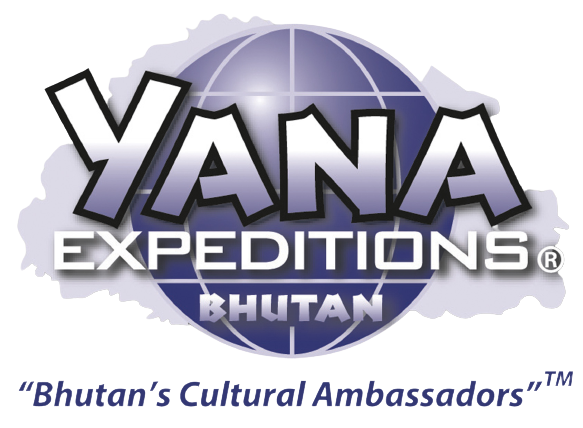Compared to Nepal, trekking in Bhutan is quite difficult – it is meant for real adventure seekers. The hillsides tend to be almost vertical. The climate is much windier, damper and colder than in Nepal. Here one cannot go trekking alone without being accompanied by somebody who knows the way. There is always a danger of getting lost. In spite of all these hazards, trekking in Bhutan is more interesting.
After having climbed a nearby ridge and been enthralled by the early sunrays striking Jichu Drakey and Jhomolhari mountains, I wander back into the camp. My bowl of hot washing water is waiting in front of my tent. In the kitchen tent, bread is being toasted, eggs fried, porridge cooked and tea brewed. Later on the trek, when we pass through a high-altitude village, where smiling kids in dirty gho’s and kiras wave at us, nothing seems to have changed for centuries – yaks are herded, crops grown and the culture remains very much intact.
These are some of the beautiful memories I have of trekking in Bhutan. Sometimes people ask me: “Why should we go trekking in Bhutan if we can trek in Nepal for half the money or less?” This write-up would enlighten you as to why people prefer trekking in Bhutan.
Reasons. Most Himalayan trekkers are interested in high mountains peaks, and mountain scenery, and many in nature and culture. Travelers on a shoestring budget head for Nepal, where some of them, survive on dahibhat, spend less than $10 a day. Some trekkers consider the scenery in Nepal more spectacular. Trekkers interested in a combination of undisturbed nature, culture and scenery prefer Bhutan, which is often described as pristine and whose culture has hardly been touched by tourism.
Trekking Style. While in Nepal most treks are teashop treks, where you stay in lodges along the routes. Only some of the trekkers hire a guide or a porter. Like their Bhutanese peers, most Nepalese guides are knowledgeable about the local culture and know a bit about nature, but a few among them do not even know the route. In Bhutan, all treks are guided luxury walking, just carrying a small daypack with water, snacks and a camera, we arrive at our campsite. Camping chairs, tea and biscuits are awaiting us. While we are about to retire for the day, our tents are being pitched.
Crowds and impact. Halfway our 2 ½ week trek along the eastern part of the Snowman trail, we meet the groups of trekkers. With them we have an enjoyable evening. The only place that gets a bit crowded along the western part of the Snowman trek in Jhomolhari base camp, where several treks meet and most groups have a rest day.
Every year a few thousand trekkers come to Bhutan while Nepal receives about a hundred thousand. Bhutan has a policy of low numbers of high value tourists with low impact on its nature and culture. These tourists pay a substantial amount of money to enjoy the pristine nature and rich culture. Nepal welcomes everyone, and at times this becomes a burden on the environment and the culture resulting in deforestation, landslides, garbage along some trails and the extinction of some aspects of the local culture.
Food. After nightfall, the cook serves an excellent three-course meal. Breakfast is good enough to make sure we have plenty of energy to start our day’s hiking. However, after two weeks, when vegetables are no fresher and the cook has run out of ideas, some meals start to get boring. In Nepal, one always eats in the lodge where one stays. Often the meals are excellent, at times mediocre and occasionally the presented concoctions defy being called food.
Security. In Bhutan there are no safety concerns and trekkers getting robbed appear to be unheard of. The government receives 35 percent of trekkers’ fees. It spends relatively more on health and education and less on military expenses than most countries in the world. Corruption is on small scale and limited. For Nepal, many countries have issued travel warnings but that is somewhat exaggerated since both Maoists and the government welcome tourists. No tourist has been killed in the conflict. Robbery and theft are quite rare in Nepal, but backpacks sometimes disappear from the bus to Jiri.
Tourism policies. In Nepal while walking into Namche Bazar (Everest route) or Manang (Around Annapurna) I feel like walking into a tourist shopping center – Bakeries, bars, restaurants and souvenir shops line the roads. Advertisements, signboards, electricity poles and telephone wire spoil the views.
Some of the developments, such as guesthouses do not blend in with the local architecture, and destroy the characteristic landscape of some of the idyllic villages. But tourism has definitely improved the living conditions of many Nepalese along the trekking routes. It would only be fair if local villagers in Bhutan benefit more from the tourism that comes to their area. Trekking in Bhutan has definitely more of the Shangri-La image than trekking in Nepal. The Bhutanese people, government and tourists should together try to keep it this way.
By: Piet van der Poel, Former Advisor to the Bumdeling Wildlife Sanctuary and Himalayan trekkers.
